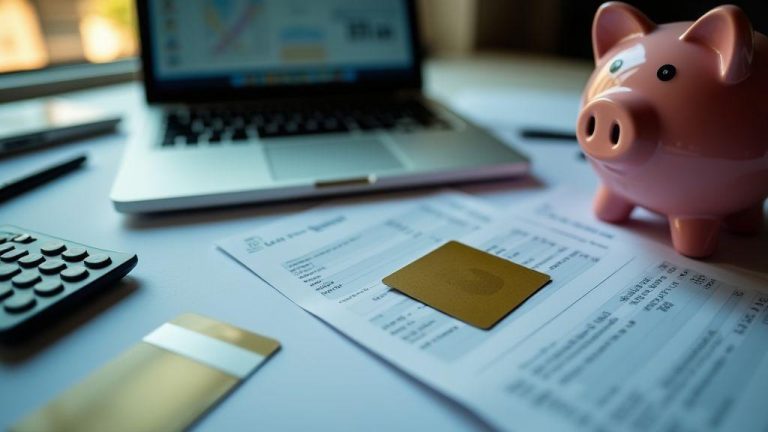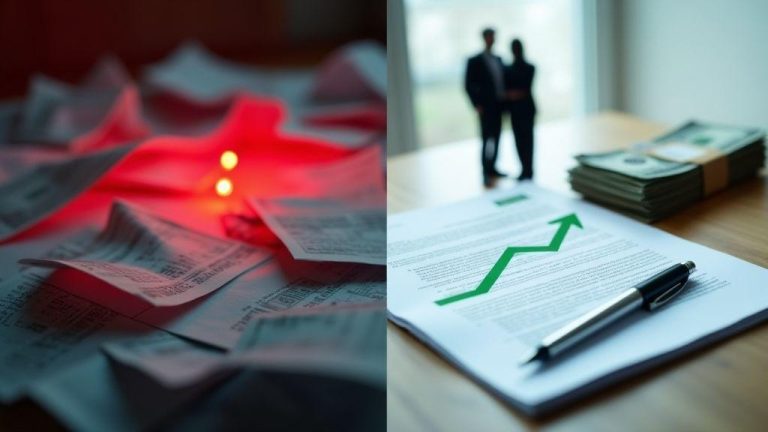If you have shaky credit, you need a clear map. Comparing unsecured versus secured personal loans for bad credit with pros and cons for rebuilding financial standing helps you decide fast. An unsecured loan asks for a promise; a secured loan asks for collateral. That difference drives rates, approval odds, and the risk to your assets—your car, savings, or home.
Unsecured loans can feel like a white‑knuckle ride: lenders charge more because they take more risk, so expect higher APRs, bigger fees, and stricter approval rules. You can get quick cash, but the price is steeper and missed payments bite harder.
Secured loans trade a lower rate for something valuable as backup. If you have a car title, home equity, or a savings account, lenders will often approve faster and at lower cost. The catch is obvious: miss payments and you could lose that asset. Think of it as borrowing against a tool you can’t afford to break.
Unsecured loan risks for bad-credit applicants: higher interest and stricter fees
With bad credit, unsecured loans often carry steep APRs and origination fees taken up front. Lenders set rates to protect themselves from risk, so you may see double‑digit rates and costly penalties.
Missing payments accelerates trouble: late fees, collections, and new negative marks on your credit report. You won’t lose a specific item, but your score can drop and the balance can balloon. For many, that snowball effect makes unsecured loans a last resort.
Secured loan benefits for bad-credit borrowers: lower rates and easier approval with collateral
Secured loans usually have lower interest because you pledge collateral. A car‑title loan, a share‑secured credit union loan, or a small home equity loan typically costs less than an unsecured option. Approval is easier because collateral reduces lender risk.
But there’s real danger. If you miss payments, the lender can repossess your car, tap your savings, or start foreclosure on a home. Use secured credit only when the pledged value is replaceable and you have a solid repayment plan. A small, short loan you can handle is often the smart route.
Pros and cons explained simply to guide your choice
- Go secured if you want a lower rate and can protect the pledged item.
- Go unsecured if you can’t risk an asset or need a short-term, small boost and accept a higher cost.
- Add a cosigner, use a credit union, or pick a share‑secured loan to lower cost.
- Read numbers out loud, ask questions, and don’t sign if something smells off.
Where to look and what documents you need to apply with bad credit
Start with places that actually want your business. Local credit unions often lend more flexibly than big banks and may judge you on your history with them, not just a score. Online lenders move fast and will show prequalification offers without a hard credit check, letting you shop without lowering your score. Peer‑to‑peer platforms can be cheaper, but rates vary by investor appetite. Visit at least two places so you can compare real offers.
Bring IDs, pay stubs, bank records, and a recent bill with your address. If you have collateral like a car or savings, bring titles or account statements. If your credit is thin, a co‑signer or evidence of steady income helps. Showing up prepared speeds things up.
Timing matters: pull your credit report first and fix obvious errors before applying. Use prequalification offers where possible to see rates without a hard hit, and keep applications within a short window to avoid multiple inquiries. Comparing unsecured versus secured personal loans for bad credit with pros and cons for rebuilding financial standing will help you pick the route that matches your goals: faster approval or lower rates in return for collateral.
Compare personal loans for bad credit at banks, credit unions, online lenders, and P2P platforms
- Banks: predictable service, branch access, stricter score and income rules; ask about relationship discounts.
- Credit unions: member‑focused underwriting, may consider recent positive behavior like steady deposits.
- Online lenders: fast decisions and easy comparisons; watch for origination fees.
- Peer‑to‑peer: may offer competitive rates if investors like your profile; documentation and fees vary.
Weigh speed, fees, and how easy it is to talk to a person if things go sideways.
Documents to prepare: ID, proof of income, bank statements, proof of residence, and any collateral titles
- Government ID, Social Security number or ITIN, and at least two proofs of address (utility bill, lease).
- Recent pay stubs, employer letter, or tax returns if self‑employed.
- Two to three months of bank statements, car or home titles if offering collateral, and documentation of debts you want to refinance.
- If using a co‑signer, bring their ID and proof of income to speed approval.
Quick checklist to improve approval chances and avoid common loan traps
- Check your credit report for errors and dispute them.
- Get prequalified online to compare rates.
- Gather ID, pay stubs, bank statements, and collateral titles.
- Consider a co‑signer or secured option to lower rates.
- Keep a small buffer in your account to show stability.
- Read all fees and the APR line‑by‑line.
- Avoid lenders who demand cash upfront or promise guaranteed approval.
- Set up automatic payments to protect your score.
How to rebuild credit using secured or unsecured personal loans—and stay safe
You can rebuild credit by taking a small, manageable loan and paying it on time. Each on‑time payment reported to the bureaus shows reliability. Start with an amount you can repay without stress, set up autopay, and treat the loan like a nonnegotiable monthly bill.
Comparing unsecured versus secured personal loans for bad credit with pros and cons for rebuilding financial standing helps you pick the right path: secured loans lower rates but put collateral at risk; unsecured loans spare your stuff but often cost more. Think about how much risk you can accept and how quickly you need the boost.
Rebuild credit with a secured personal loan: make on‑time payments and protect collateral
- Use a small, short‑term loan so payments stay affordable.
- Keep insurance current if the collateral is a vehicle.
- Don’t borrow more than you can repay; if you fall behind, contact the lender immediately.
- Losing collateral hurts your credit more than a single missed payment does.
Rebuild credit with an unsecured personal loan: watch for higher APRs, fees, and the need for a cosigner
- Start with smaller amounts and shorter terms; use the loan to build a clean payment record and refinance later if rates drop.
- A cosigner can lower your rate or secure approval, but they assume risk if you miss payments—communicate openly and protect their credit.
Key precautions: check APR, total cost, prepayment rules, and avoid title loans and loan flipping
Always read the loan contract thoroughly. Look at APR, origination fees, total cost over the life of the loan, and any prepayment penalties. Say no to title loans, payday loans, and loan flipping schemes that roll you into bigger debt. Verify the lender’s license, keep copies of agreements, and ask questions before you sign.
Summary: choosing the best path
Comparing unsecured versus secured personal loans for bad credit with pros and cons for rebuilding financial standing comes down to tradeoffs: lower cost versus asset risk, speed versus formality. If you need a lower rate and can protect the collateral, a secured loan may make sense. If you can’t risk an asset or need a quick, small boost, an unsecured loan can work—if you accept a higher cost. Shop around, prepare documentation, and pick the option you can repay reliably.
Frequently asked questions
- Which is better for you?
Secured loans often cost less; unsecured loans keep your stuff safe. Choose what you can pay on time to help your score.
- Can comparing unsecured versus secured personal loans for bad credit with pros and cons for rebuilding financial standing help your credit fast?
Yes—on‑time payments boost your score. Consistency matters more than speed.
- What risks should you know?
Secured loans risk your collateral. Unsecured loans cost more. Missing payments hurts your credit. Read the fine print.
- How do rates change?
Secured loans usually offer lower rates; unsecured loans charge higher rates. Shopping around can save money.
- Which option will rebuild credit best?
Both can rebuild credit if you pay on time. Secured may be easier to obtain; unsecured shows you can borrow responsibly without collateral. Choose what fits your budget and discipline.



